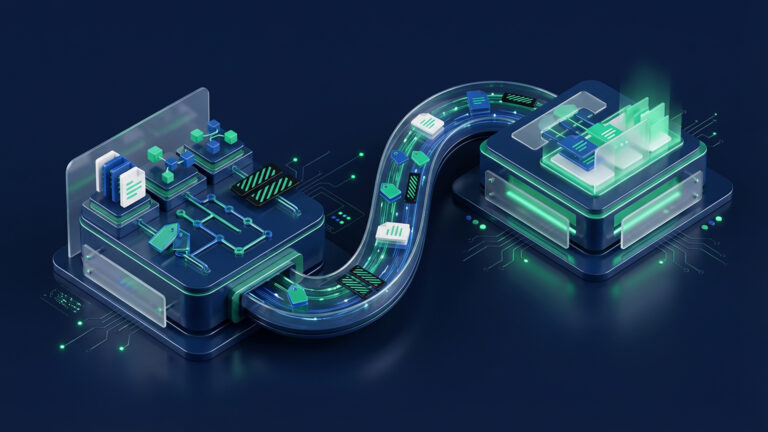The U.S. federal court system is highly regulated and uniform across all branches. This is true from the Supreme Court all the way down to lower district courts. However, it wasn’t always like this. During the early days of the U.S. court system, district courts were highly fragmented. They were inconsistent, which made enforcing federal laws a challenging process. Things are different today, thanks to the Federal Rules of Civil Procedure (FRCP). Keep reading to learn more about the FRCP and about rule 33, which is an important component for regulating interrogatories, to see how it impacts your organization.
What Are the Federal Rules of Civil Procedure?
The Federal Rules of Civil Procedure control civil proceedings in US district courts. The Supreme Court adopted the FRCP on December 20, 1937. Then, Congress enacted the FRCP, which went into effect on September 16, 1938, following a series of court modernization reforms. Since then, there have been several rounds of amendments to the FRCP. But it still remains the most important piece of legislation governing court proceedings.
What Is Rule 33 of the FRCP?
Rule 33 of the FRCP has to do with issuing and responding to interrogatories. For those who may be unfamiliar with the term, interrogatories precede depositions during the legal discovery process. When a party receives an order for an interrogatory, it means that the individual must provide a written account of their statement as it relates to their deposition. The point of an interrogatory is to have something in writing that supports a set of oral statements. It’s a way to gauge whether someone’s telling the truth.
Rule 33(a): General Rules
The section of the rule starts by setting limits on the number of acceptable interrogatories. Section (a) states that unless otherwise stipulated, a party can only serve 25 written interrogatories, which includes all discrete subparts. Section (a)(2) outlines the scope of an interrogatory, stating that an interrogatory can relate to any matter that may be looked into under Rule 26(b). Further, an interrogatory is not objectionable merely because it requests an opinion or contention that relates to fact or to the application of law to fact. However, the court can order that the interrogatory doesn’t require an answer until the designated discovery is complete. They could also order that it doesn’t require an answer until a pretrial conference takes place.
Section (b): Answers and Objections
Section (b) says that interrogatories must get answered by responding parties. What’s more, the interrogatories need to be answered by the party to whom they are directed. In the event that the party is a public or private corporation, association, partnership, or government agency, any agent or officer within the organization can respond. Section (b) also explains that a responding party needs to serve its answers and objections within 30 days after being served with interrogatories. A shorter or longer time can be stipulated under rule 29 or by court order. Two additional important parts of section (b) include objections and signature requirements. Legal teams need to convey the grounds for objecting to an interrogatory clearly and effectively. Any ground that is not stated in a timely objection is waived unless the court excuses the failure. In addition, the person who answers the questions has to sign them. Similarly, the attorney who objects must sign any objections.
Section (c): Use
Section (c) explains that legal teams can use an interrogatory to the extent allowed by the Federal Rules of Evidence. In other words, after submitting a response, it becomes evidence. Legal teams can use it in a court of law to influence the outcome of the case. For example, a driver may state in an interrogatory that they were using a cell phone at the time of a car accident. The opposing team would then be able to use that as evidence during a trial.
Section (d): Option to Produce Business Records
This section of the law says that if the answer to an interrogatory can be determined by examining, compiling, auditing, abstracting, or summarizing a party’s business records—which can include electronically stored information (ESI)—and if the burden of obtaining the answer will be the same for either party, the responding party can answer by specifying the records that must be reviewed and by giving the interrogating party an opportunity to examine the record, audit it, and make copies, summaries, and compilations. Legal teams should take note of this section in particular, which basically says that business records and ESI can potentially serve as an answer to an interrogatory. A responding party can legally answer by granting access to specific business records. Once a party exercises their right to produce business records, they need to provide seamless access to physical and electronic records. As such, legal teams need to thoroughly understand the contents of the records. They need to organize them and present them to the opposing party in a way that’s easy to understand. To streamline this process and avoid complications, legal teams should have an eDiscovery framework in place. At the very least, it beats doing everything by hand.
How Venio Helps With eDiscovery Requests
A growing number of legal teams are migrating away from manual eDiscovery management. Increasingly, they are turning to cloud-based eDiscovery platforms. For example, Venio offers the Venio Cloud platform, is one of the most complete solutions on the market for eDiscovery management. Using Venio Cloud, legal teams can collect, store, manage, process, and export data to stakeholders in a secure and efficient manner. With this platform, your team will receive a number of incredible benefits, which we will briefly examine next.
Faster Responses
Legal teams shouldn’t have to waste any time combing through devices, databases, and storage systems during a case. Scrambling to compile data for reports can take away from time that could otherwise go toward forming an argument and winning the case. Venio Cloud serves as a centralized repository for producing, storing, and exporting information during a case. This enables teams to move much faster and more efficiently when responding to information requests.
Data Culling Made Easy
Legal teams often deal with extremely large datasets, especially when producing business records. Data often requires culling, or trimming, before teams can share it with other parties. Venio Cloud offers a robust tool that enables data culling without the threat of losing any information. All data remains intact in the Venio Cloud platform. This way, data remains accessible if further discovery requests arise.
Stronger Security
Security is a top concern for legal teams. This is especially true when handling and transmitting highly sensitive ESI. Venio Cloud comes with airtight security features, including a simple, secure sharing link. This eliminates using third-party data transmission tools when exporting data. Data sharing occurs easily through the Venio Cloud platform.
Give Venio a Try
Using Venio Cloud expedites response times, lowers operational costs, and empowers legal teams across all stages of the eDiscovery process. For more information, experience the power of Venio Cloud with a free demo. When you’re ready to witness the power of Venio in the flesh and supercharge your eDiscovery efforts, request a free demo.
How Venio Fits In
Legal discovery and eDiscovery both move very quickly. As such, legal teams don’t have much time to produce evidence and respond to requests. Teams that can’t produce evidence in a timely manner and respond to requests risk facing court sanctions and court losses.
To streamline the process, many companies are turning to cloud-based eDiscovery platforms like Venio Cloud, offering end-to-end eDiscovery management. Venio Cloud enables lightning-fast eDiscovery, including a transcript review feature for reviewing and searching depositions or hearing transcripts. The platform even includes a transcription feature for producing and redacting documents. Additional noteworthy features include AI-driven assisted review, fully managed and secure cloud delivery, and automated operations for increased productivity and consistent outcomes. Simply put, Venio Cloud helps eDiscovery teams move faster. Instead of having to manually collect documents by hand, the technology automates much of the process.
Venio also offers platform-specific eDiscovery training and certification. This helps eDiscovery professionals get up to speed with the platform in a matter of just a few days. To experience the easiest way to approach eDiscovery, request a Demo.






